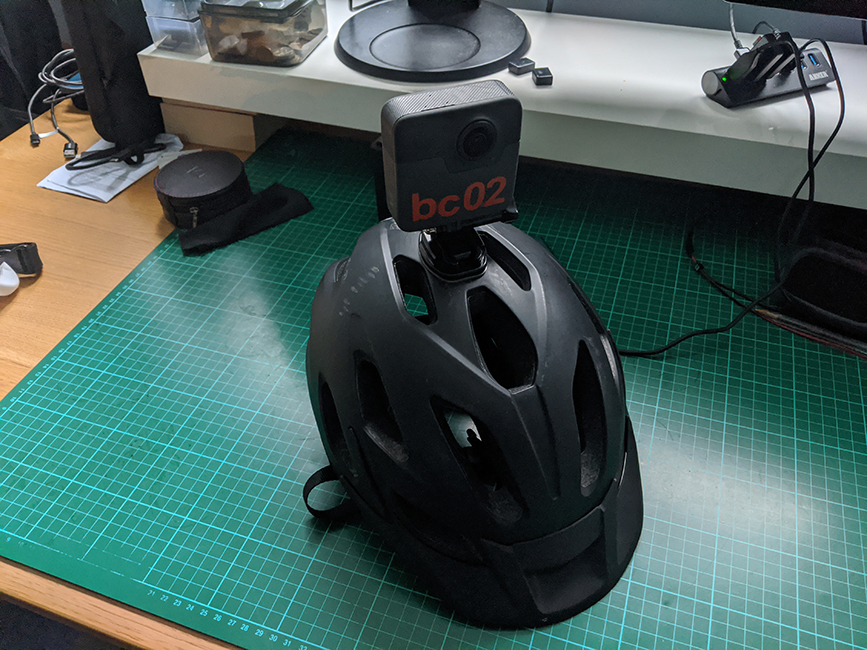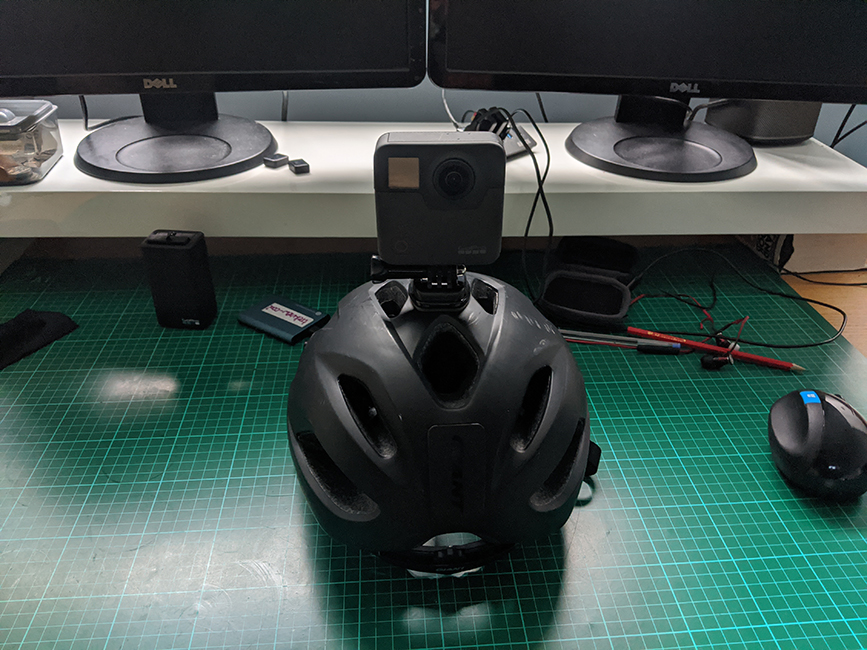The second iteration of my Street View bike, this time designed for downhill trails.
Last year I showed you the first iteration of my Street View bike.
It was perfect for capturing smooth and flat trails, with no low-hanging obstructions overhead.
However, I still wanted to capture some downhill trails as 360-degree tours.
I needed another solution.
Enter helmet cam.


OK, it’s not a “Street View Bike”… it’s better (and much simpler).
Using a cheap “50-in-1” GoPro accessory kit I picked up on Amazon for £15 gave me numerous options to try out.
The kit ships with a dedicated helmet strap for vented bike helmets. However, I found this to come loose quite easily when your head is being flung around as you are constantly looking around.
I found the adhesive pads and mounts to work much better. The downside of this solution is that you will have a fixed GoPro mount on your helmet. My garage is full of bike helmets, so I always have other options. The mount is not that bulky either.
One criticism of having the camera mounted on your head is weight. Before mounting the camera I didn’t think this would be an issue, the GoPro Fusion weighs just 226g, though on your head, being flung around with a higher centre of gravity, the weight does become noticeable after about an hour.
Street View bike cam V1 had a good line of sight in all directions as it was mounted well above my head. The only other negative I would point out about the helmet cam is that much more of the field of view to the ground is obstructed by the helmet itself. That said, there is rarely anything interesting directly beneath me – I’m never that high off the ground.
As they say, the proof is in the pudding.
Here’s a 360-degree photo shot on a trail (Blue 16) in Swinley Forest, Bracknell, UK.
Pretty good, if I do say so myself.
In summary, for long distance touring on open roads, I’ll use the v1 setup. For anything off-road (non-tarmacked surface) I’ll use the v2 setup described in this post.
We're building a Street View alternative for explorers
If you'd like to be the first to receive monthly updates about the project, subscribe to our newsletter...


